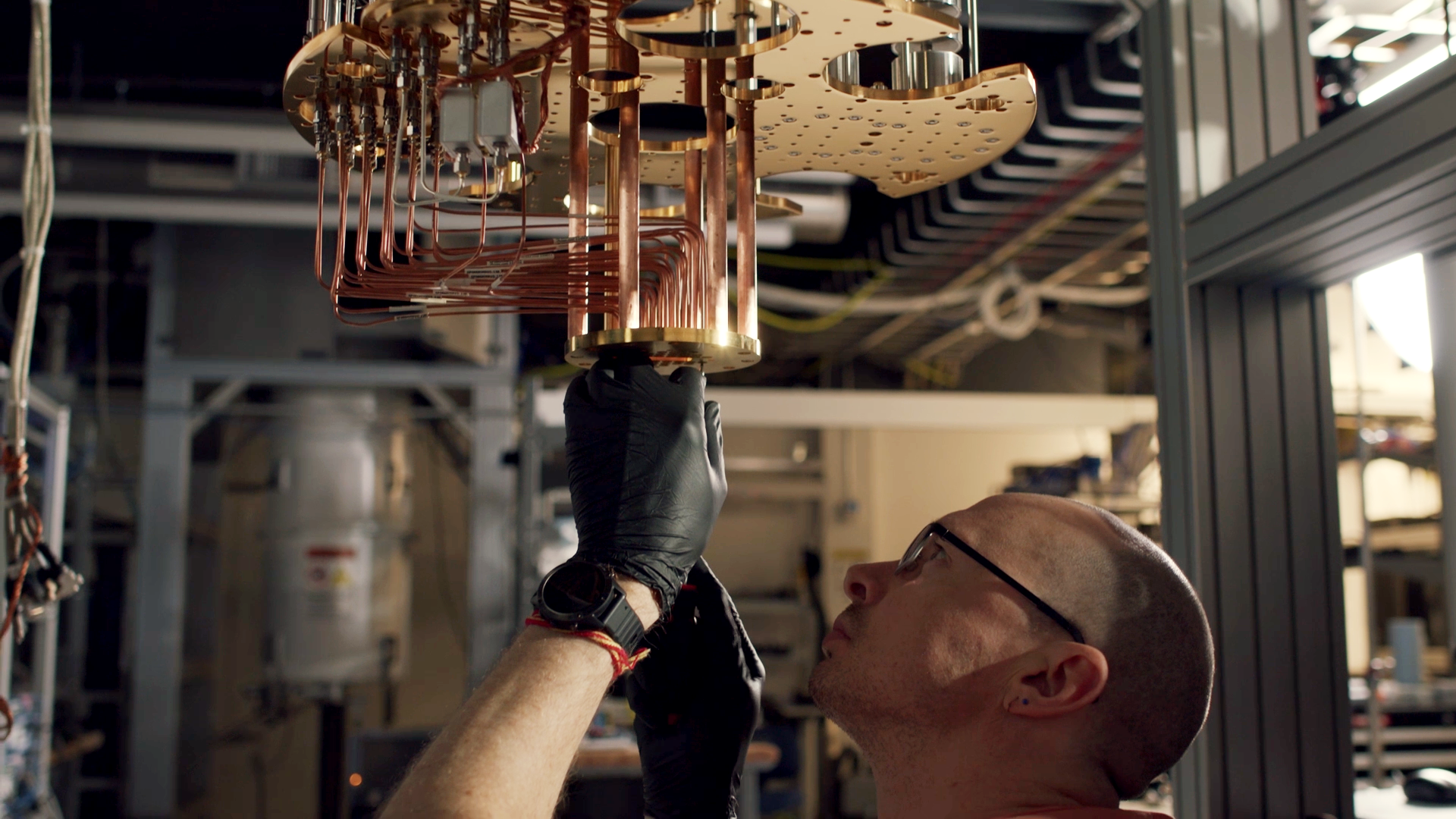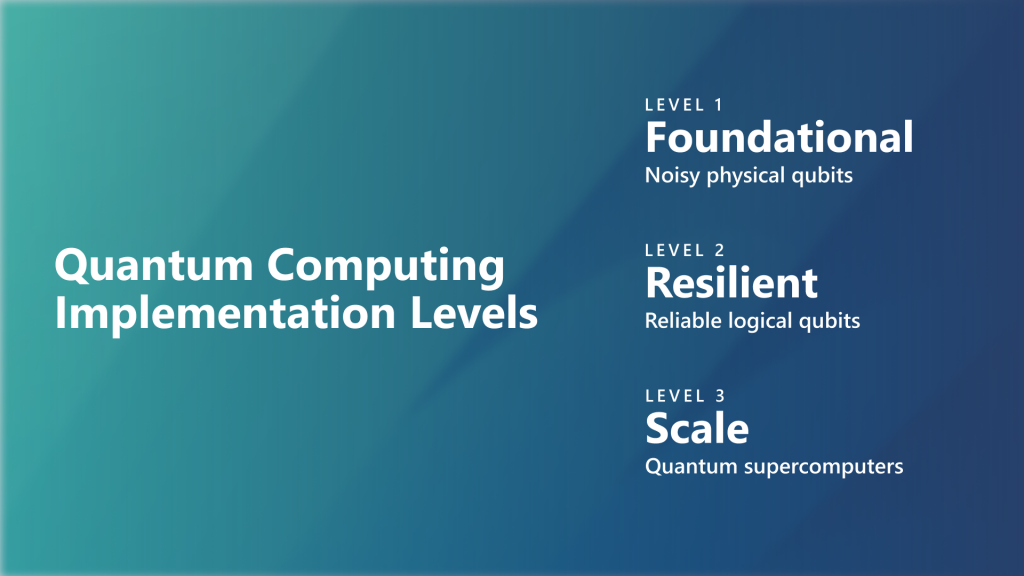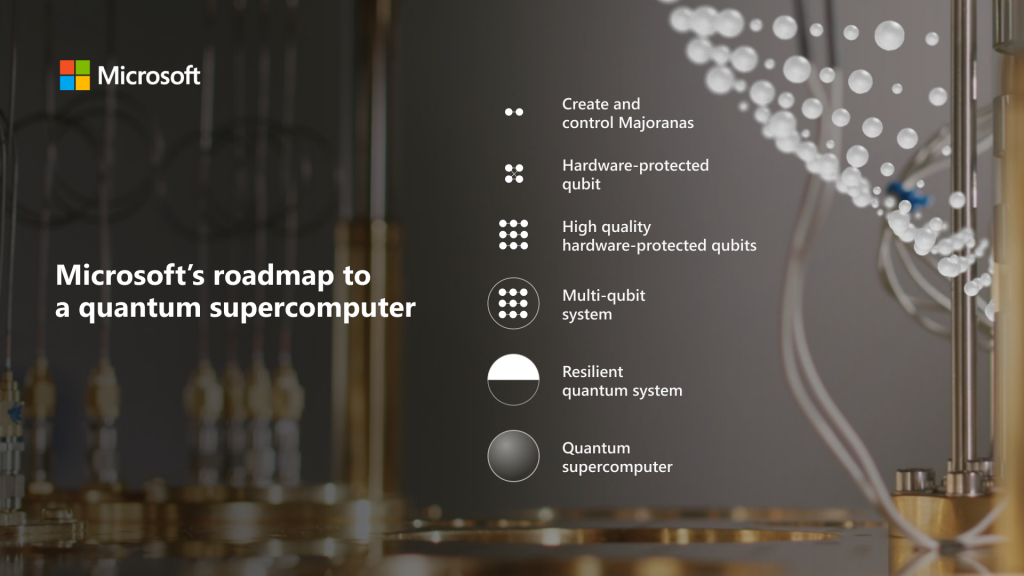Today, Microsoft is announcing new advances to Azure Quantum aimed at accelerating scientific discovery.
From the Iron Age revolutionizing agriculture to the Silicon Age revolutionizing how we communicate, new materials have always created inflection points for societal progress. Advances in this space will be transformative. For example, the transportation industry can develop more efficient and powerful batteries. Pharmaceutical researchers can develop new drugs. The chemistry industry will be able to discover safer and more sustainable compounds for the products we use daily, like electronics, paints and textiles. And most importantly, scientists will be able to solve society’s most pressing challenges like reversing climate change and addressing food insecurity.
However, understanding nature is not an easy task. For accurate calculations of the most complex quantum states of molecules, the number of energy states of just 100 electrons can exceed the number of atoms in the visible universe.
Now, with a new generation of AI, the world’s most advanced AI models are coming together with our universal user interface – natural language – and nature’s foundational language – chemistry – ushering in a new era of scientific discovery. And that’s just the first step as we prepare for an even bigger transformation ahead of us: quantum supercomputing.
Innovators can start experimenting with the world’s best quantum hardware in Azure Quantum and get ready to solve more complex problems when quantum supercomputing becomes a reality. We are fast approaching the time when scientists and businesses will be able to solve previously intractable problems to unlock growth and human progress.
Today, we are introducing three advances in Azure Quantum towards this vision.
1. Azure Quantum Elements
Azure Quantum Elements accelerates scientific discovery by integrating the latest breakthroughs in high-performance computing (HPC), artificial intelligence and quantum computing.
With Azure Quantum Elements, scientists and product developers can:
- Reduce time to impact and costs by accelerating the R&D pipeline and bringing innovative products to market more quickly, with some customers seeing a six-month to one-week speed up from project kick-off to solution.
- Dramatically increase the search space for new materials, with the potential to scale from thousands of candidates to tens of millions.
- Speed up certain chemistry simulations by 500,000 times, which is like compressing a year into one minute.
- Get ready for scaled quantum computing by addressing quantum chemistry problems today with AI and HPC, while experimenting with existing quantum hardware and getting priority access to Microsoft’s quantum supercomputer in the future.
Using this comprehensive system, researchers can make advances in chemistry and materials science with unprecedented scale, speed and accuracy.
Scale. Scientists can understand the complex reactions needed to produce a product, find new candidates, and optimize the entire process. For example, scientists can now use Azure Quantum Elements to explore 1.5 million potential configurations in complex reactions comprised of 50,000 elementary steps. Early adopters are already using this massive scale to find more sustainable replacements for use in many everyday products, or entirely new products for innovative scenarios.
Speed. Azure Quantum Elements accelerates simulation by incorporating Microsoft’s specialized AI models for chemistry, which we trained on millions of chemistry and materials data points. We based these models on the same breakthrough technologies you see elsewhere with generative AI. While Copilot understands the language of humans, Azure Quantum Elements also understands the language of nature – chemistry.
Accuracy. Today, scientists are using unique AI models and HPC scale to run simulations with higher levels of accuracy not available before. Azure Quantum Elements also integrates classical and quantum computing to provide an on-ramp to even greater simulation accuracy. In the future, scientists believe a quantum supercomputer will enable predictive chemical design at 100X accuracy.
Industry innovators, including BASF, AkzoNobel, AspenTech, Johnson Matthey, SCGC, and 1910 Genetics have already adopted Azure Quantum Elements to transform their research and development, and today, others can join them. Azure Quantum Elements will be available in private preview in a few weeks, and you can sign up today to learn more.
2. Copilot in Azure Quantum
Copilot in Azure Quantum helps scientists use natural language to reason through complex chemistry and materials science problems.
With Copilot in Azure Quantum, a scientist can accomplish complex tasks on top of a fabric of cloud supercomputing, advanced AI and quantum all integrated with the tools they use today. It can generate the underlying calculations and simulations, query and visualize data and help get guided answers to complicated concepts. Just as Copilot in other Microsoft products is transforming software development, productivity and search, our ambition is for Copilot in Azure Quantum to transform and accelerate scientific discovery — whether it’s creating safer and more sustainable products, accelerating drug discovery or solving the most pressing challenges on the planet.
Copilot also helps people learn about quantum computing and write code for today’s quantum computers. It provides a fully integrated, browser-based experience available to try for free with a built-in code editor, quantum simulator and seamless code compilation. We designed it to make the complex more manageable and help anyone explore quantum, chemistry and materials science while bringing these transformational fields closer together. Check it out today.
3. Microsoft’s roadmap to a quantum supercomputer
The ultimate unlock will come when organizations are able to accurately design new chemicals and materials with a quantum supercomputer. Our industry will follow a similar path as classical supercomputers did in the 20th century. From vacuum tubes, to transistors, to integrated circuits, advances in underlying technology will enable scale and impact.
As we make progress as an industry, quantum hardware will fall into one of the three categories of Quantum Computing Implementation Levels:
- Level 1 – Foundational: Quantum systems that run on noisy physical qubits, which includes all of today’s Noisy Intermediate Scale Quantum (NISQ) computers.
- Level 2 – Resilient: Quantum systems that operate on reliable logical qubits.
- Level 3 – Scale: Quantum supercomputers that can solve impactful problems that even the most powerful supercomputers cannot.
To reach Scale, a fundamental physics breakthrough is required. Microsoft has achieved this breakthrough and today presented the peer reviewed data in a journal by the American Physical Society.
This means that Microsoft has achieved the first milestone towards a quantum supercomputer. We can now create and control Majorana quasiparticles. With this achievement, we’re well on our way to engineering a new hardware-protected qubit. With it, we can then engineer reliable logical qubits to reach the Resilient Level and then progress to reach Scale.
A quantum supercomputer will be able to solve problems that are intractable on a classical computer and scale to solve the most complex problems facing our world. To do this, it must be both performant and reliable. Customers need to understand how capable a quantum system is of solving real problems, from the machine to the network overhead. That’s why measuring a supercomputer can’t be about counting physical or logical qubits.
To understand a supercomputer’s performance, our industry needs a new measurement. For that, we’re offering the metric of reliable Quantum Operations Per Second (rQOPS), which measures how many reliable operations can be executed in one second. It considers the full system performance, as opposed to just qubit performance, so there is an assurance that an algorithm will run correctly.
Our industry is yet to transition from the NISQ era and therefore, today’s quantum computers are all at Level 1 with a rQOPS of zero. The first quantum supercomputer will need at least 1 million rQOPS and will scale to more than 1 billion to solve impactful chemistry and materials science problems.
Accelerating scientific discovery together
With the advent of any innovative technology, there are risks that need to be planned for and mitigated. Microsoft’s AI principles guide us and these fundamental tenets apply to quantum as well. As we develop new services like Azure Quantum Elements and engineer our first quantum supercomputer, we will apply additional measures of rigor incorporating feedback throughout the process.
We are also preparing now for a quantum-safe future. Microsoft has a comprehensive plan to ensure all our services remain secure and is partnering with our customers and the industry to support this important transition.
The opportunity in front of us is immense. Scientists and businesses will revolutionize the building blocks of everyday products to usher in a new era of innovation and economic growth. Together, we can compress the next 250 years of chemistry and materials science into the next 25.
Please join Satya Nadella and me today at a virtual briefing Accelerating Scientific Discovery at 8 a.m. PT or catch it later on demand. We’ll share more about the Azure Quantum Elements private preview, Copilot in Azure Quantum, and our roadmap to a quantum supercomputer.



